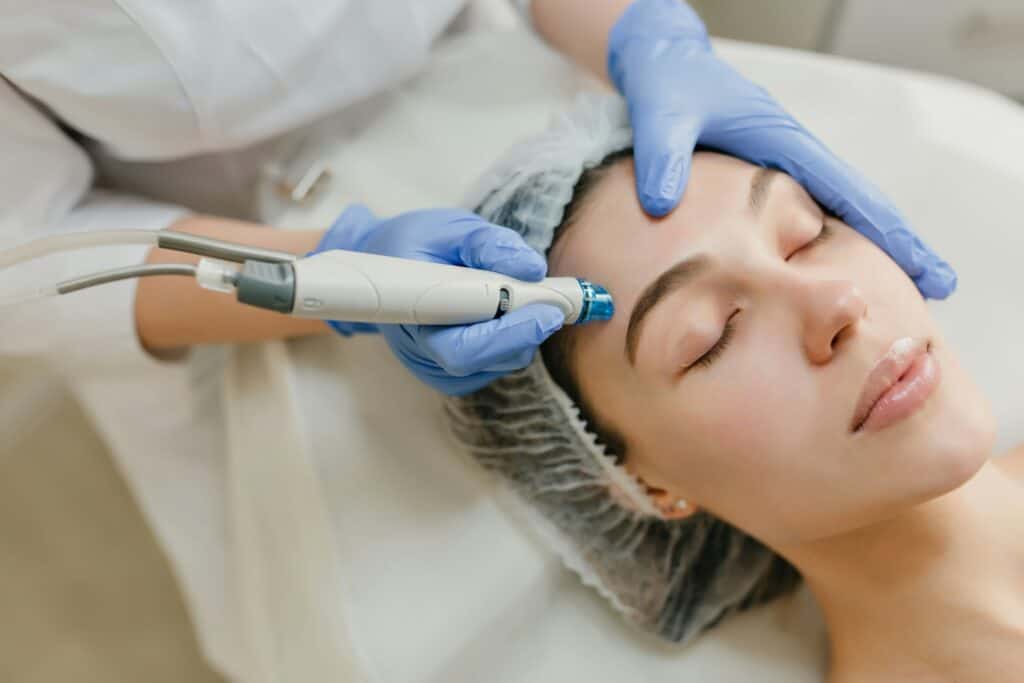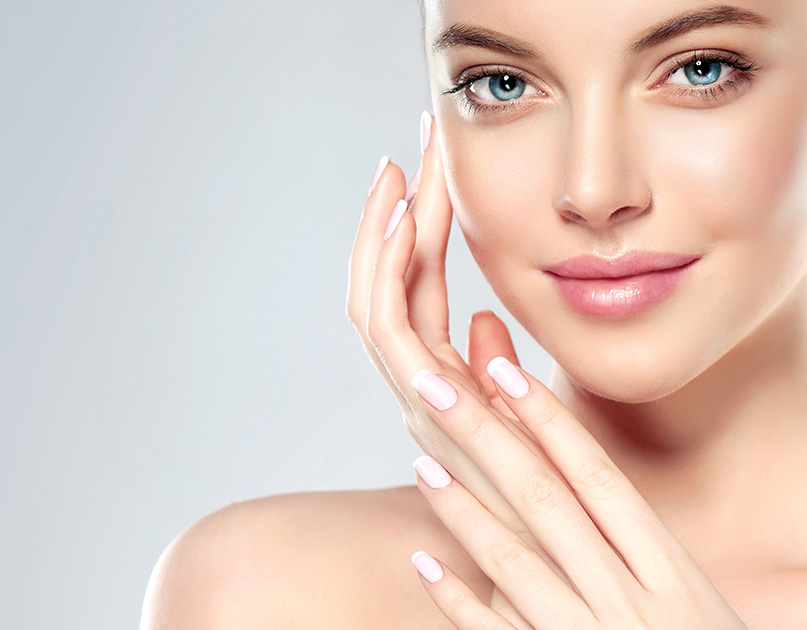Aging is a natural process, but advancements in cosmetic science now allow us to combat visible signs of aging safely and effectively. Among these innovations, regenerative aesthetics has gained attention for its ability to restore youthful skin from within. But the big question remains: can regenerative aesthetics truly reverse the signs of aging?
In this blog, we’ll explore how regenerative aesthetics works, the specific signs of aging it can address, and why it may be the future of non-invasive skincare.
Key Takeaways
- Regenerative aesthetics works at a cellular level to stimulate collagen, elastin, and tissue repair, directly targeting the signs of aging.
- Results are natural-looking and long-lasting, unlike temporary fixes such as fillers or Botox.
- Consulting a certified provider, ensures safe, tailored treatments for optimal skin health and youthful results.
What is Regenerative Aesthetics?
Regenerative Aesthetic Medicine is a specialized branch of cosmetic dermatology that blends regenerative medicine techniques with advanced aesthetic treatments. Its goal is to restore, rejuvenate, and repair the skin and underlying tissues, rather than merely masking the signs of aging or damage.
At its core, regenerative aesthetics works by activating the body’s natural healing and regenerative processes. This stimulates the production of healthy tissue, enhances skin quality, and addresses aging at the cellular level, resulting in long-lasting, natural-looking improvements that go beyond temporary cosmetic fixes.
How Regenerative Aesthetics Works
Regenerative aesthetics works at a cellular level, using the body’s natural healing processes to rejuvenate skin. This approach targets the root causes of aging rather than temporarily masking the symptoms.
Cellular Rejuvenation
The core principle is to harness your body’s inherent ability to regrow cells and repair tissue, improving skin quality from within. By enhancing cellular turnover, regenerative treatments strengthen the skin’s structure, leaving it healthier and more resilient.
Stimulating Natural Processes
Unlike traditional treatments that rely on synthetic fillers or chemicals, regenerative aesthetics focuses on activating your body’s natural healing mechanisms. This promotes long-lasting skin rejuvenation while minimizing the risk of unnatural or artificial-looking results.
Boosting Key Cells
Fibroblasts are the cells responsible for producing collagen and elastin, proteins essential for skin firmness and elasticity. Regenerative treatments stimulate fibroblast activity, which helps restore skin support, reduce sagging, and maintain a youthful bounce.
Common Signs of Aging Regenerative Aesthetics Can Address
Loss of Firmness and Elasticity
Collagen and elastin naturally decline with age, causing looser and less resilient skin. Regenerative treatments help restore these essential proteins, improving skin tone and firmness without surgical intervention.
Fine Lines and Wrinkles
Fine lines and wrinkles are some of the first visible signs of aging. By stimulating collagen production, regenerative aesthetics smooths the skin gradually, offering natural-looking improvement rather than a temporary fill.
Uneven Skin Tone
Aging skin may develop dullness, discoloration, or uneven tone. Regenerative treatments enhance cellular repair and renewal, helping to brighten the skin and restore a radiant, healthy glow.
Laxity and Volume Loss
While regenerative aesthetics does not add volume like dermal fillers, it strengthens the skin’s structure, reducing the appearance of sagging and enhancing overall skin quality.
Benefits of a Regenerative Approach for Aging
Natural-Looking Results
Because regenerative treatments work in harmony with your body’s own biology, results appear gradually and naturally over time. Improvements are subtle and progressive, enhancing your features without looking artificial. This approach helps maintain a youthful, authentic appearance that evolves naturally rather than suddenly, giving your skin a refreshed and vibrant look.
Long-Lasting Effects
Unlike temporary cosmetic fixes that may fade quickly, regenerative aesthetics focus on improving overall skin health at a deeper level. By enhancing cellular function, stimulating collagen and elastin production, and supporting protein synthesis, the benefits of these treatments continue to develop over months. This results in sustained firmness, improved skin texture, and a radiant glow that lasts far longer than conventional cosmetic procedures.
Preventative Care
Starting regenerative treatments early can act as an effective form of preventative skincare. By maintaining healthy collagen and elastin levels, these treatments help slow down age-related changes before they become more pronounced. This proactive approach invests in long-term skin resilience, smoothness, and radiance, allowing you to age gracefully while preserving a youthful complexion for years to come.
Minimally Invasive
Many regenerative treatments, such as PRP, microneedling, and polynucleotides, are non-surgical and gentle on the skin. These procedures usually involve minimal downtime and carry a low risk of complications, allowing you to resume daily activities quickly.
Examples of Regenerative Treatments
Polynucleotides
These are injected DNA fragments that actively stimulate fibroblasts, the cells responsible for collagen and elastin production. By enhancing these proteins, polynucleotides improve skin elasticity, smooth fine lines, and refine overall skin texture, giving a more youthful and resilient appearance.
Radiofrequency Microneedling (RF Microneedling)
This advanced treatment combines traditional microneedling with radiofrequency energy to boost collagen and elastin production deep within the skin. It helps tighten loose or sagging skin, reduce the appearance of fine lines and wrinkles, and improve overall skin tone and texture for a smoother, firmer complexion.
Exosome Therapy
Exosomes are tiny, naturally occurring vesicles that carry essential cell-signaling molecules. When applied to the skin, they promote tissue repair, stimulate cellular regeneration, and enhance overall skin vitality. This therapy helps accelerate healing after procedures, reduces inflammation, and supports long-term skin rejuvenation.
Biostimulants
Substances like Sculptra and Radiesse act as bio-stimulatory injectables that encourage your body to produce its own collagen over time. They gradually restore firmness, improve facial structure, and enhance skin texture, offering natural, long-lasting rejuvenation without immediate artificial changes.
Conclusion
So, can regenerative aesthetics reverse the signs of aging? Yes — to a significant degree. By harnessing your body’s natural healing mechanisms, these treatments reduce wrinkles, restore firmness, improve skin tone, and enhance overall radiance, offering long-lasting and authentic rejuvenation.
If you want to explore safe, science-backed regenerative aesthetics treatments, FABrx Studio offers expert solutions designed to restore youthful skin while prioritizing your safety and comfort. Consult with a trusted dermatologist in NYC to invest in your skin and experience the future of anti-aging care.
Frequently Asked Questions
1. Are regenerative aesthetic treatments safe for all skin types?
Yes, many regenerative aesthetic treatments are safe for all skin types. For instance, Vivace RF microneedling combines microneedling with radiofrequency energy to deliver collagen stimulation on two levels, making it safe and effective for various skin types. However, it’s essential to consult with a qualified professional to determine the most suitable treatment for your specific skin type and concerns.
2. How long do results from regenerative aesthetics typically last?
The longevity of results varies depending on the treatment and individual factors. Generally, regenerative aesthetic results can last between 12 to 24 months, with some improvements continuing for up to two years. Regular maintenance sessions can help prolong the benefits and maintain optimal results.
3. Is there any downtime after undergoing regenerative aesthetic procedures?
Most regenerative aesthetic treatments involve minimal downtime. For example, after procedures like microneedling with PRP or PRF, patients may experience redness, swelling, and dryness lasting 5–7 days. It’s crucial to follow post-treatment care instructions provided by your practitioner to ensure a smooth recovery and optimal results.
4. Can regenerative aesthetics be combined with other anti-aging treatments?
Yes, regenerative aesthetics can often be combined with other anti-aging treatments to enhance results. For instance, combining microneedling with PRP or PRF can boost collagen production and improve skin texture. However, it’s essential to consult with a qualified professional to determine the most appropriate combination of treatments for your specific needs and goals.
5. Who is an ideal candidate for regenerative aesthetic treatments?
Ideal candidates for regenerative aesthetic treatments are individuals seeking natural-looking, long-lasting improvements in skin texture, tone, and firmness. These treatments are suitable for those experiencing early signs of aging, such as fine lines, wrinkles, and mild skin laxity. A consultation with a qualified professional can help determine if regenerative aesthetics are appropriate for your specific concerns and goals.


